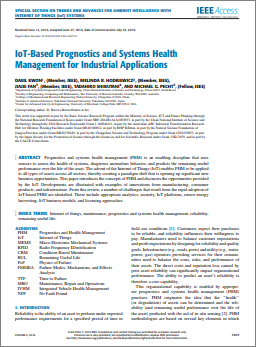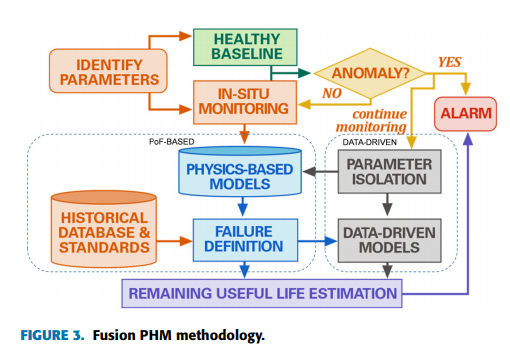If you are considering using Bluetooth sensor beacons for prognostics, you should take a look at the free IEEE paper IoT-Based Prognostics and Systems Health Management for Industrial Applications (pdf).
Prognostics is the determination of health of assets to diagnose anomalous behaviour and predict the remaining useful life. It’s used to:
- Prevent catastrophic failures
- Increase asset availability through less downtime and less time wasted through ‘no fault found’ tests
- Extend maintenance cycles
- Execute timely repair
The overall aim is to lower lifecycle costs via fewer inspections, repairs and manual inspections. It can be applied to all types of assets across all sectors but is particularly applicable to manufacturing, industry and infrastructure. Infrastructure includes roads and ports as well as utility industries such as water, power and gas.
Prognostics and in-situ testing isn’t new. However, what is new is substantially improved viability and economics. New sensors, such as beacons, are easier to use, can be attached to legacy equipment and have much lower costs. The cost of connectivity and cloud storage is also decreasing. This means more assets can be retro-actively connected and the sharing of data across assets and platforms enables a more complete operating picture. This opens up new business opportunities.
The paper explains the four main types of prognostic management strategies: corrective, fixed-interval preventative, failure-finding, and condition-based maintenance (CBM). It also explains a new fusion approach to prognostics:
The paper gives examples of use of prognostics in the manufacturing, heavy industry, energy generation, transport & logistics, infrastructure assets, automobile, medical, warranty and robotic industries.
It ends with the mention that, in the future, current research and work on energy harvesting will benefit sensors used for prognostics.
More information:
Sensor Beacons
Beacon Proximity and Sensing for the Internet of Things (IoT)
Beacons in Industry and the 4th Industrial Revolution (4IR)
Using Bluetooth Wireless Sensors

